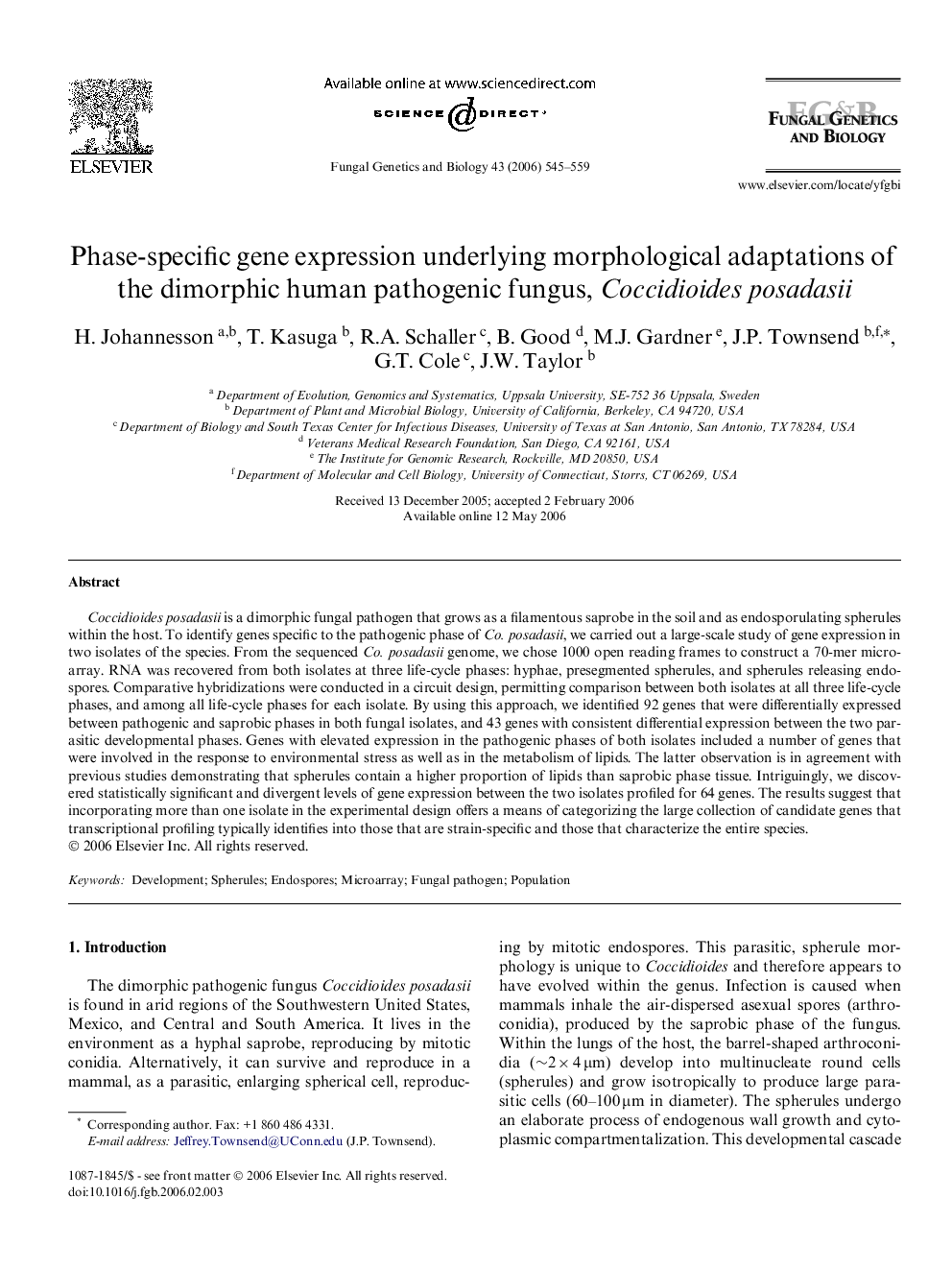| Article ID | Journal | Published Year | Pages | File Type |
|---|---|---|---|---|
| 2181780 | Fungal Genetics and Biology | 2006 | 15 Pages |
Coccidioides posadasii is a dimorphic fungal pathogen that grows as a filamentous saprobe in the soil and as endosporulating spherules within the host. To identify genes specific to the pathogenic phase of Co. posadasii, we carried out a large-scale study of gene expression in two isolates of the species. From the sequenced Co. posadasii genome, we chose 1000 open reading frames to construct a 70-mer microarray. RNA was recovered from both isolates at three life-cycle phases: hyphae, presegmented spherules, and spherules releasing endospores. Comparative hybridizations were conducted in a circuit design, permitting comparison between both isolates at all three life-cycle phases, and among all life-cycle phases for each isolate. By using this approach, we identified 92 genes that were differentially expressed between pathogenic and saprobic phases in both fungal isolates, and 43 genes with consistent differential expression between the two parasitic developmental phases. Genes with elevated expression in the pathogenic phases of both isolates included a number of genes that were involved in the response to environmental stress as well as in the metabolism of lipids. The latter observation is in agreement with previous studies demonstrating that spherules contain a higher proportion of lipids than saprobic phase tissue. Intriguingly, we discovered statistically significant and divergent levels of gene expression between the two isolates profiled for 64 genes. The results suggest that incorporating more than one isolate in the experimental design offers a means of categorizing the large collection of candidate genes that transcriptional profiling typically identifies into those that are strain-specific and those that characterize the entire species.
